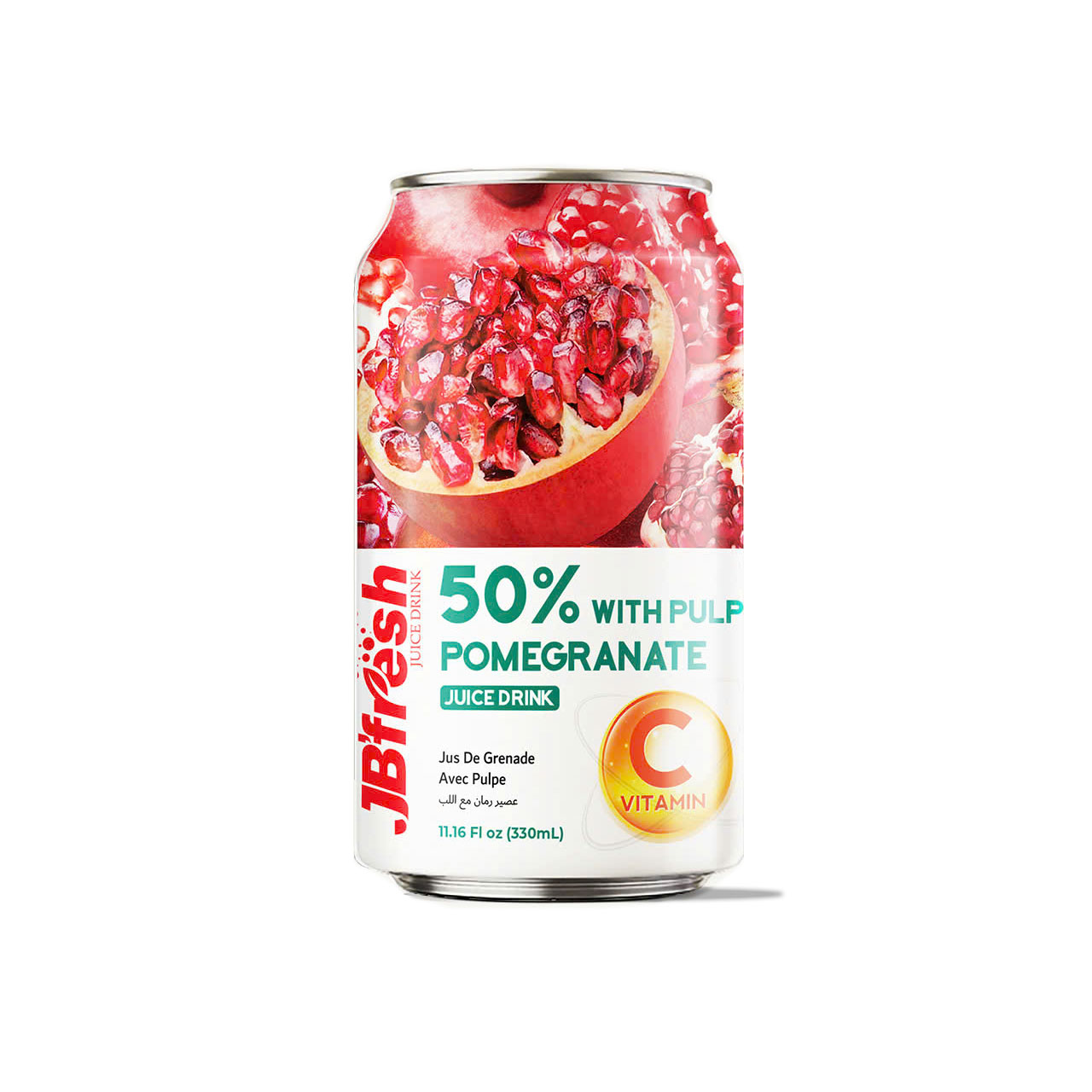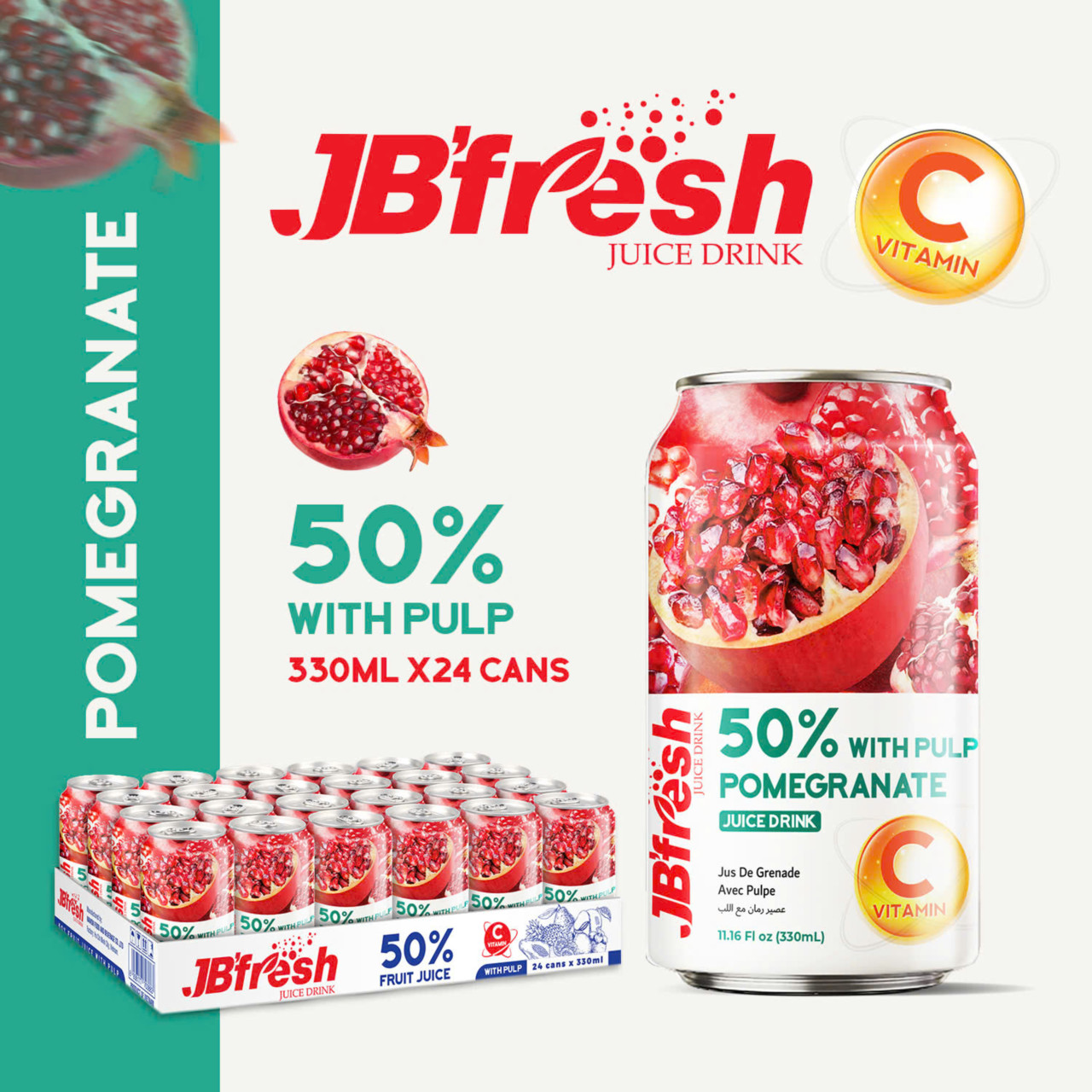What is fresh pomegranate juice?
Fresh pomegranate juice is the liquid obtained by pressing or cold-extracting the arils, the red seed sacs inside a ripe pomegranate. It differs from processed or packaged juices because it is not made from concentrate and does not undergo heavy pasteurization. This means it contains no artificial sweeteners, preservatives, or colorings, keeping the drink as close to the raw fruit.
The juice typically has a deep ruby color, a balance of tartness and natural sweetness, and a slightly thick, astringent texture that reflects the fruit's high antioxidant and polyphenol content.
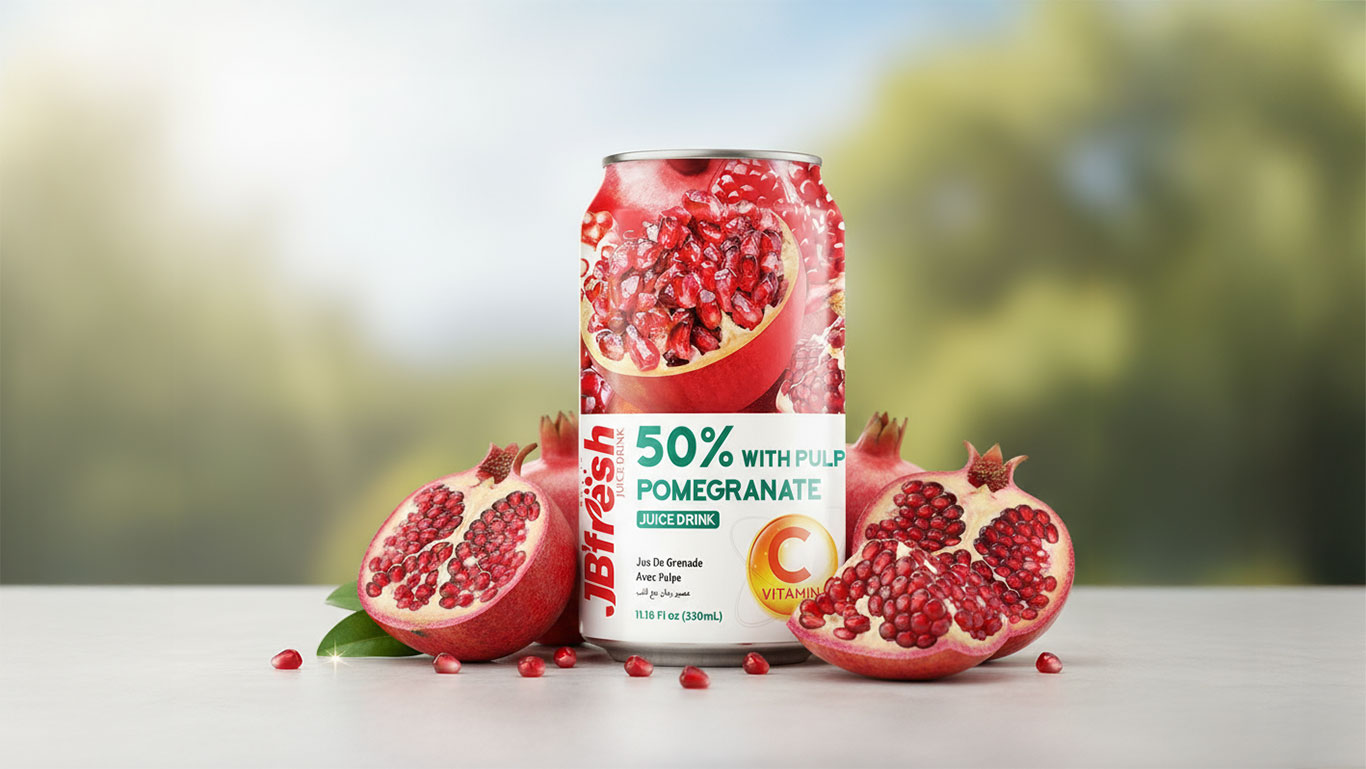
Fresh vs. processed pomegranate juice
The differences between fresh and processed pomegranate juice go beyond simple taste. Processed juices are usually pasteurized for shelf stability and may be reconstituted from concentrate. This treatment extends storage life and makes distribution easier, but it also reduces heat-sensitive compounds such as vitamin C and alters the fruit's natural aroma. In many cases, processed versions include added sugar or sweeteners to balance the tartness and preservatives or stabilizers to maintain texture and color. These adjustments provide convenience and consistency but move the product further away from the natural state of the fruit.
On the other hand, fresh-pressed pomegranate juice is obtained directly from ripe arils without heavy processing. As a result, it retains most of its original antioxidants, polyphenols, and vitamins C and K. These compounds are known to support cardiovascular health, reduce inflammation, and provide overall antioxidant protection. The flavor profile is also more authentic, combining tangy sharpness with a subtle sweetness that bottled options often lack. The juice tends to be thicker and slightly astringent, reflecting its concentration of natural plant compounds.
While fresh juice delivers superior nutritional value and a vibrant sensory experience, it has a shorter shelf life and requires immediate consumption or refrigeration. Processed juice, in contrast, offers convenience and broader availability.
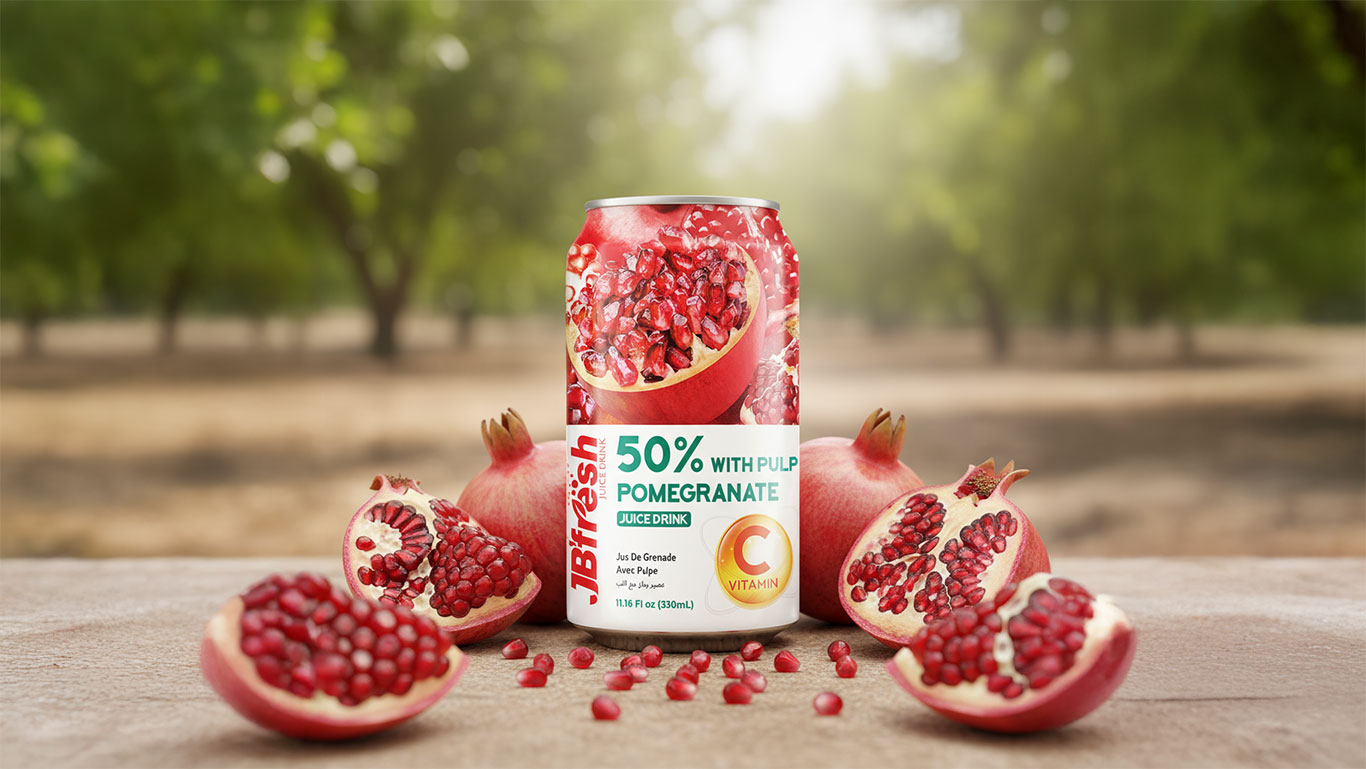
Different types and blends of fresh pomegranate juice
Fresh pomegranate juice can take on different forms depending on how it is prepared and what it is paired with.
Cold-pressed vs. traditional extraction
Cold-pressed juice is made using hydraulic pressure to extract liquid from fruit without applying heat. This gentle method helps preserve heat-sensitive compounds such as vitamin C, polyphenols, and natural enzymes. It also keeps the flavor bright and close to the raw fruit, so cold-pressed juice is often associated with premium quality and higher nutritional value.
Pomegranate juice blends: beet, apple, or mint
Pomegranate juice is often enjoyed independently but also pairs well with a wide range of fruits and herbs. Blending it with milder options helps soften its naturally bold, tangy profile while adding layers of complementary flavor. For example, mixing with beet brings an earthy sweetness, apple adds a gentle crispness, and mint contributes a refreshing lift. Beyond these, pomegranate also works well with citrus fruits such as orange or lemon, which highlight its acidity, or with tropical fruits like pineapple for a sweeter, more vibrant taste.
These blends expand the flavor possibilities and increase the variety of nutrients delivered in each serving. By combining pomegranate with other ingredients, consumers can enjoy both creativity in taste and broader health benefits.
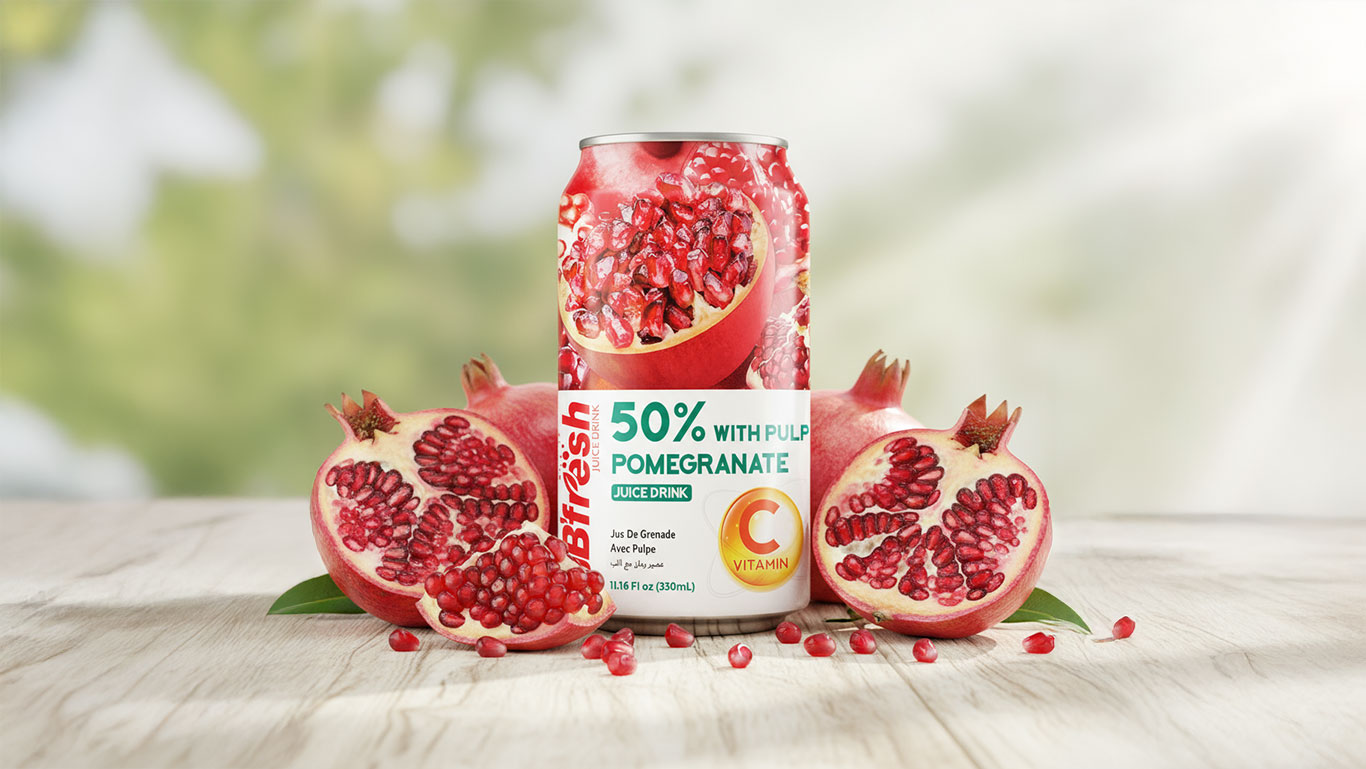
Pomegranate juice with citrus fruits
Blending pomegranate with citrus fruits such as orange, lemon, or grapefruit creates a vibrant juice that highlights freshness and sharp acidity. The tangy sweetness of orange balances pomegranate's natural tartness, while lemon or grapefruit adds an extra layer of zesty brightness. This combination is appealing in taste and feels energizing, making it a favorite choice for morning drinks.
From a nutritional perspective, this blend is rich in vitamin C, potassium, and antioxidants. It supports immune health and daily hydration while offering a refreshing alternative to plain fruit juice. Pairing pomegranate with citrus fruits represents one of the most versatile and health-oriented options for consumers seeking variety.
Pomegranate juice with tropical fruits
When mixed with tropical fruits like pineapple, mango, or passion fruit, pomegranate juice takes on a sweeter and more exotic profile. Pineapple adds juicy brightness, mango contributes smooth sweetness, and passion fruit brings a fragrant tang that elevates the blend. These flavors are especially popular for summer beverages and smoothies.
Nutritionally, the tropical pairing provides vitamins A, C, and E, antioxidants, and dietary fiber. It creates a balance of wellness and indulgence, making pomegranate juice more approachable for those who prefer a milder taste. This creative option expands how the juice can be enjoyed on everyday and special occasions.
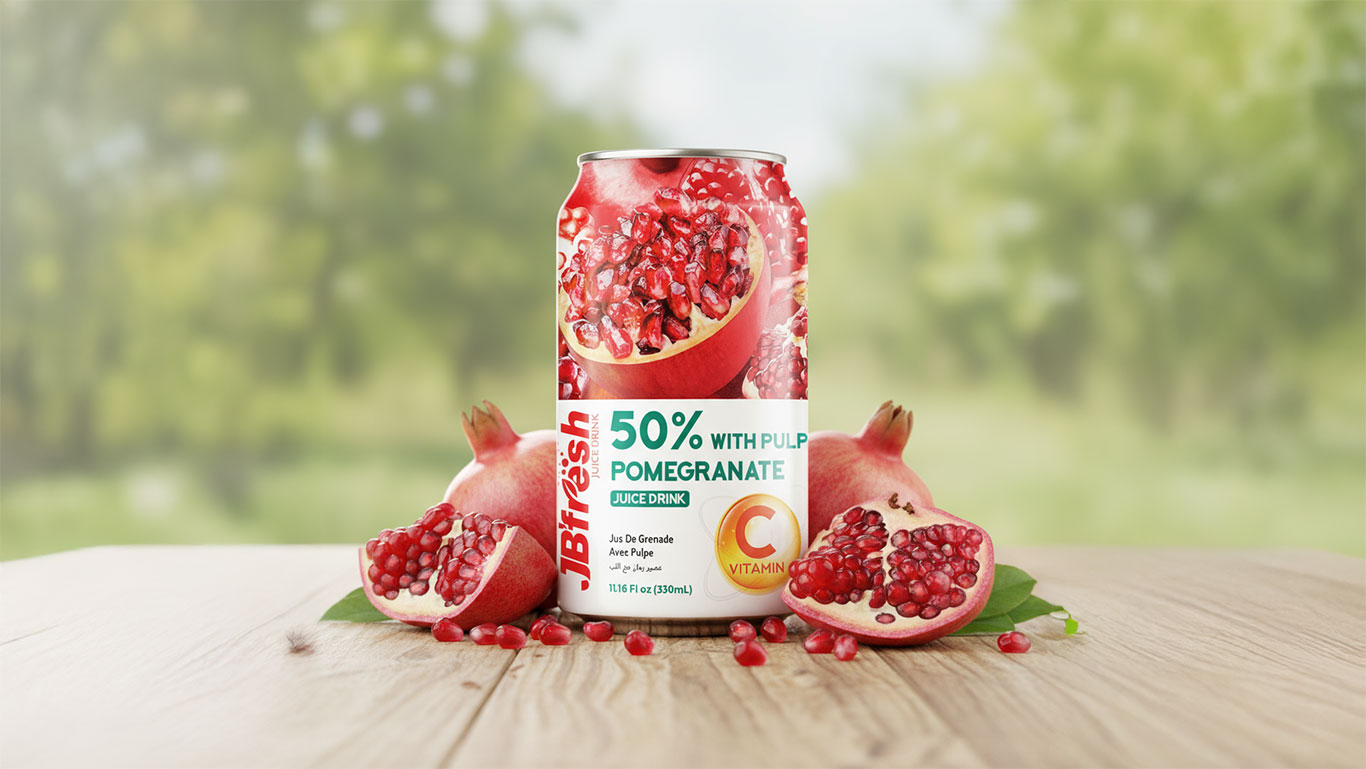
Sparkling pomegranate juice
Sparkling pomegranate juice combines fresh pomegranate's deep, ruby-red flavor with the lively fizz of carbonated water. The effervescence enhances its tart-sweet profile, giving the drink a lighter and more refreshing sensation. It is often served at gatherings as a festive non-alcoholic choice.
Besides its taste, sparkling pomegranate juice remains a source of natural antioxidants, making it both enjoyable and beneficial. It can be consumed independently for a crisp refreshment or used as a base for mocktails and cocktails. This variation shows how pomegranate juice adapts to modern beverage trends while keeping its wholesome character.
Spotlight of JBFresh fresh pomegranate juice
JbFresh's fresh pomegranate juice is made from carefully selected pomegranates grown in premium orchards. The juice is bottled without preservatives, sugar, or colorants using cold-pressed technology, just pure, natural flavor.
Each sip delivers a rich, bold experience with high nutritional value. Whether enjoyed as-is or added to smoothies or wellness shots, JbFresh's pomegranate juice brings purity and consistency to every glass.

